Caryn
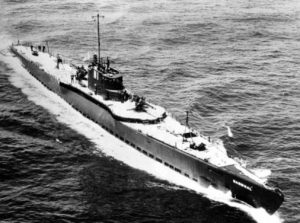
 German submarine U-1206 was a Type VIIC U-boat of Nazi Germany’s Kriegsmarine during World War II. Construction started on June 12, 1943 at F. Schichau GmbH in Danzig. She was put into service on March 16, 1944 and a little over a year later, in April 14, 1945 she was at the bottom of the North Sea. The boat’s emblem was a white stork on a black shield with green beak and legs. U-1206 was one of the late-war boats that had been fitted with new deepwater high-pressure toilets, allowing their use while running at depth. These toilets were a rather complicated procedure, so special technicians were trained to operate them. Operating the toilets incorrectly…in the wrong sequence could result in waste or seawater flowing back into the hull. Not only would it have been a nasty mess, it could be dangerous.
German submarine U-1206 was a Type VIIC U-boat of Nazi Germany’s Kriegsmarine during World War II. Construction started on June 12, 1943 at F. Schichau GmbH in Danzig. She was put into service on March 16, 1944 and a little over a year later, in April 14, 1945 she was at the bottom of the North Sea. The boat’s emblem was a white stork on a black shield with green beak and legs. U-1206 was one of the late-war boats that had been fitted with new deepwater high-pressure toilets, allowing their use while running at depth. These toilets were a rather complicated procedure, so special technicians were trained to operate them. Operating the toilets incorrectly…in the wrong sequence could result in waste or seawater flowing back into the hull. Not only would it have been a nasty mess, it could be dangerous.
On April 14, 1945, just 24 days before the end of World War II in Europe, U-1206 was cruising at a depth of 200 feet, eight nautical miles off Peterhead, Scotland. A sailor decided that he knew the procedure for flushing the toilet, and after performing the procedure wrong, caused large amounts of seawater to flood the boat. According to the Commander’s official report, while in the engine room helping to repair one of the diesel engines, he was informed that a malfunction involving the toilet caused a leak in the forward section. The leak flooded the submarine’s batteries, which were located directly beneath toilet, causing them to generate chlorine gas. The Commander had no alternative but to surface. Immediately upon surfacing, basically right in the middle of several British patrol boats, U-1206 was torpedoed, forcing Schlitt to scuttle the submarine. One man died in the attack, three men drowned in the heavy seas after abandoning the vessel and 46 were captured.
I can’t imagine the frustration the Commander must have felt. Prior to the stupidity of one sailor, the submarine had been cruising along in relative safety. A forced surfacing was sure to put them in harms way, but the gas in 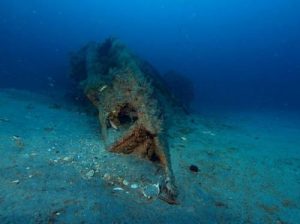
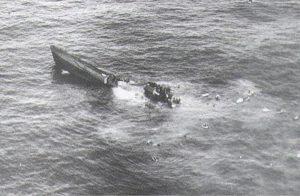 the submarine would most certainly kill them too. He did the only thing he could do, and U-1206 was at the bottom of the North Sea less than an hour later, where it would remain, hidden During survey work for the BP Forties Field oil pipeline to Cruden Bay in the mid 1970s, the remains of U-1206 were found at 57°21’N 01°39’W in approximately 230 feet of water.
the submarine would most certainly kill them too. He did the only thing he could do, and U-1206 was at the bottom of the North Sea less than an hour later, where it would remain, hidden During survey work for the BP Forties Field oil pipeline to Cruden Bay in the mid 1970s, the remains of U-1206 were found at 57°21’N 01°39’W in approximately 230 feet of water.

 My grand niece, Mackenzie Moore has been really enjoying the extra time Covid-19 has given her with her daddy, my nephew, Shannon Moore. Having her daddy at home has given him time to do some very cool things around the house, including Mackenzie’s favorite…her bedroom redecorating. She now has a very cool multi-colored polka-dot wall. She also has some great furniture, and other bling. Of course, her mommy, my niece, Lindsay Moore helped too. Having her daddy home has been awesome in many ways. The two of them have gone for rides on the moped too, and Mackenzie thinks that’s great. Of course, Mackenzie thinks anything and everything that has to do with her daddy is great. He is Mackenzie’s hero. They have also been swimming as much as they can, before the colder fall weather kicks in.
My grand niece, Mackenzie Moore has been really enjoying the extra time Covid-19 has given her with her daddy, my nephew, Shannon Moore. Having her daddy at home has given him time to do some very cool things around the house, including Mackenzie’s favorite…her bedroom redecorating. She now has a very cool multi-colored polka-dot wall. She also has some great furniture, and other bling. Of course, her mommy, my niece, Lindsay Moore helped too. Having her daddy home has been awesome in many ways. The two of them have gone for rides on the moped too, and Mackenzie thinks that’s great. Of course, Mackenzie thinks anything and everything that has to do with her daddy is great. He is Mackenzie’s hero. They have also been swimming as much as they can, before the colder fall weather kicks in.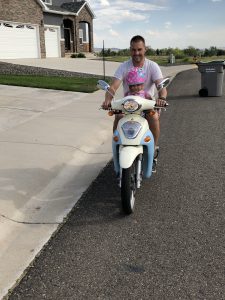
The family has recently gone camping with Lindsay’s siblings, Jessie and Jason Sawdon, Ryan and Chelsea Hadlock, and Kellie Hadlock; and Mackenzie’s cousins, Ethan and Aurora Hadlock, and Adelaide Sawdon. Since Mackenzie doesn’t have any siblings yet, and her family lives 2½ hours from the rest of the cousins, camping was a wonderful way to give the kids all some cousin-time. Mackenzie also has a cousin on her daddy’s side named Khloe, and she loves to see her and talk to her on the phone as often as she can. Cousins are truly a child’s first friends, and ultimately some of their best friends. Some of Mackenzie’s favorite people on the planet are her grandparents Allyn and Chris Hadlock, and Mary and TJ Moore. With the extra time off, Lindsay and Shannon have been able to make trips to Casper for visits, and Mary and TJ came to Laramie to celebrate her birthday. There is really nothing better than grandparent time for a kid. Grandparents are always the greatest thing since parents.


Mackenzie is a very imaginative girl…living in her own little world. She has dolls, but sometimes would rather use other things as “babies. She is always pretending to take care of her babies…which are usually something like a sippy cup, or a ball, or an ice cream cone. Mackenzie pushes these things around in a stroller, and tucks them into bed…which is usually a kitchen towel. Her mom tells me she loves to sing, ring, and loves JESUS! Today is Mackenzie’s 3rd birthday. Happy birthday Mackenzie!! Have a great day!! We love you!!

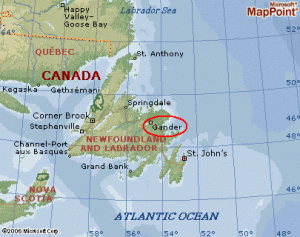 Following the horrific attacks on our country on September 11, 2001, all planes were told to land at the nearest possible airport immediately. Before long, there were no planes in United States airspace, other than military planes. The feeling was an eerie one. Maybe other people considered the international flights, but for some odd reason, I did not until I read a book called, “When The World Came To Town.” When the United States closed its airspace that day, it left literally thousands of people out over the oceans with nowhere to go…almost. Those that had not passed the point of no return, most likely turned around, but there were many planes that had to go on. Nevertheless, they could not land in the United States, so our neighbors in Canada came to the rescue.
Following the horrific attacks on our country on September 11, 2001, all planes were told to land at the nearest possible airport immediately. Before long, there were no planes in United States airspace, other than military planes. The feeling was an eerie one. Maybe other people considered the international flights, but for some odd reason, I did not until I read a book called, “When The World Came To Town.” When the United States closed its airspace that day, it left literally thousands of people out over the oceans with nowhere to go…almost. Those that had not passed the point of no return, most likely turned around, but there were many planes that had to go on. Nevertheless, they could not land in the United States, so our neighbors in Canada came to the rescue.
There were only a couple of places that planes en route to the east coast of the United States could land. One of them was Gander, Newfoundland…a small town of 9,561 people in 2001…and nearby communities like Gambo, Lewisporte, Appleton and Norris Arm. When the US airports shut down, it left 38 planes and 6,500 people who were heading west over the Atlantic, with very few options. Enter Gander, Newfoundland. Gander airport received those 38 planes, and opened everything in their town to those 6,500 people and a couple of dogs. The passengers were mostly in shock…both because of what had just happened, and because all the people of Gander simply dropped everything to personally take care of the stunned passengers.
At the time, the school bus drivers were on strike. As if they were one person, they all laid down their picket signs and went to drive their unexpected guests around…not just from the airport, but anywhere they needed or wanted to go. Pharmacists filled prescriptions for free. Shop owners declined payment for goods sold to the passengers. The arena at the Gander Community Centre became a giant walk-in fridge for food donations. The people brought their best dishes…comfort food for the passengers, all of whom were feeling, like every United States citizen was feeling…nauseous, anxious, and scared. If people began to cry, someone was there to comfort them and allow them to talk it out. People opened their homes, allowing people to stay with them, and others to shower in their homes. Homes were not locked. They were opened to the people from the planes…at all hours. If people just needed to get out of the community center, someone took them wherever they wanted to go…even just for a drive.
The tarmac at Gander International Airport quickly became a parking lot. There were planes everywhere. I don’t think a plane could take off, if they wanted to, but then, nobody was really going anywhere. The United States was in a “holding pattern,” and for Gander, the same applied, to a degree. They were busy helping their unexpected guests to feel more comfortable, and less anxious, if that was possible. Nevertheless, the passengers were not bored. The townspeople entertained them with music, tours, a church service, and even a birthday party for a passenger with a birthday. The townspeople took the passengers to Walmart to get them 
 the clothing and other necessities they had to leave in the cargo hold of the plane. Whatever they wanted or needed, they were supplied with. The people of Gander did it all, and asked for nothing in return. All that is great, but the truly wonderful thing that the people of Gander, Gambo, Lewisporte, Appleton and Norris Arm did for the stranded passengers, was to offer friendship…a friendship that has endured through the 19 years since that fateful day.
the clothing and other necessities they had to leave in the cargo hold of the plane. Whatever they wanted or needed, they were supplied with. The people of Gander did it all, and asked for nothing in return. All that is great, but the truly wonderful thing that the people of Gander, Gambo, Lewisporte, Appleton and Norris Arm did for the stranded passengers, was to offer friendship…a friendship that has endured through the 19 years since that fateful day.

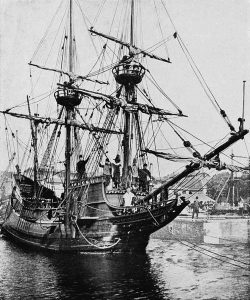 When we think about the September 11, 2001 terrorist attacks, most people are first saddened and appalled, and then we wonder…why?? We should also wonder…why September 11th. I’m sure that the terrorists pick a day, without really knowing why that was the day they picked, but I find the parallels concerning September 11, to be beyond coincidental. I can’t really take credit for pointing out the parallels either, that honor goes to Jonathan Cahn, who is the author of “The Harbinger II,” among other books on the same subject. When you hear about the parallels…well, it’s almost eerie. Cahn pointed out some things that I had no idea about, and it is my guess that I am not alone in not knowing about these parallels, and the good news is that you can research them for yourself to see if what I am telling you is correct or not.
When we think about the September 11, 2001 terrorist attacks, most people are first saddened and appalled, and then we wonder…why?? We should also wonder…why September 11th. I’m sure that the terrorists pick a day, without really knowing why that was the day they picked, but I find the parallels concerning September 11, to be beyond coincidental. I can’t really take credit for pointing out the parallels either, that honor goes to Jonathan Cahn, who is the author of “The Harbinger II,” among other books on the same subject. When you hear about the parallels…well, it’s almost eerie. Cahn pointed out some things that I had no idea about, and it is my guess that I am not alone in not knowing about these parallels, and the good news is that you can research them for yourself to see if what I am telling you is correct or not.
New York City was founded in 1609, when Henry Hudson sailed into what is now the Upper Bay of New York Harbor in the Dutch East India Company ship, Halve Maen (Half Moon in English). Hudson was looking for a Northwest Passage to Asia. He landed on what is now Manhattan, just a short distance from where the World Trade Center had stood in modern times…on September 11, 1609. When I heard that, I had to check it out for myself, and sure enough, on September 11, 1609, Henry Hudson sailed to the southern point of modern day Manhattan. September 11th…seriously!!
So the terrorists flew into the World Trade Center on September 11, 2001 just a short distance from Henry Hudson’s famous landing, but what of the Pentagon. Well, during World War II, when it was decided that the military needed a single headquarters, the plan began to take shape. The location was chosen, and then came the groundbreaking ceremony on…you guessed it, September 11, 1941. I found it not only shocking that the attacks came on the days of the founding of Manhattan and the Pentagon, but that those two separate places 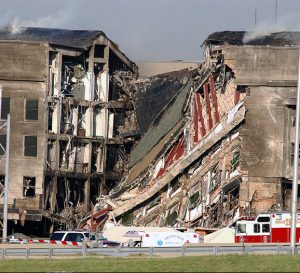
 could have that date in common. Could the terrorists have known about these two obscure events in the passage of time. I don’t think so, because I don’t think they were that smart. They simply did what they were told. Could Osama Bin Laden or Khalid Sheikh Mohammed have known. I suppose so, but what would they have done if the dates hadn’t matched. None of that made any sense. From their prospective, they simply wanted to attack America. To me, the date is beyond coincidence. It is prophetic and it is spiritual. You can check out the research and draw your own conclusion, or better yet, read the book. There is much more there…in the book…far too much to say here, but it got my attention.
could have that date in common. Could the terrorists have known about these two obscure events in the passage of time. I don’t think so, because I don’t think they were that smart. They simply did what they were told. Could Osama Bin Laden or Khalid Sheikh Mohammed have known. I suppose so, but what would they have done if the dates hadn’t matched. None of that made any sense. From their prospective, they simply wanted to attack America. To me, the date is beyond coincidence. It is prophetic and it is spiritual. You can check out the research and draw your own conclusion, or better yet, read the book. There is much more there…in the book…far too much to say here, but it got my attention.
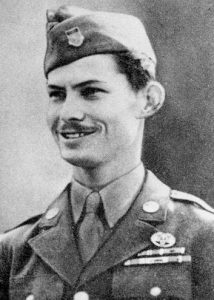 As with any war, there are a number of people who, because of their religious or personal beliefs, cannot bring themselves to participate in the taking of another life. That leaves war off the table for them. Desmond Doss, born February 7, 1919, was a United States Army corporal who served as a combat medic in the infantry during World War II. That’s what happened to the conscientious objectors. They didn’t just get to go home, they stayed in as a medic, without a gun, who was known as “Preacher” to those around him. Doss may not have had a gun, but he managed to be awarded the Bronze Star Medal with a “V” device, for exceptional valor in aiding wounded soldiers under fire in Guam and the Philippines. Doss went on to distinguish himself in the Battle of Okinawa, saved the lives of 50–100 wounded infantrymen atop the area known by the 96th Division as the Maeda Escarpment or Hacksaw Ridge. With that action, Doss became the only conscientious objector to receive the Medal of Honor.
As with any war, there are a number of people who, because of their religious or personal beliefs, cannot bring themselves to participate in the taking of another life. That leaves war off the table for them. Desmond Doss, born February 7, 1919, was a United States Army corporal who served as a combat medic in the infantry during World War II. That’s what happened to the conscientious objectors. They didn’t just get to go home, they stayed in as a medic, without a gun, who was known as “Preacher” to those around him. Doss may not have had a gun, but he managed to be awarded the Bronze Star Medal with a “V” device, for exceptional valor in aiding wounded soldiers under fire in Guam and the Philippines. Doss went on to distinguish himself in the Battle of Okinawa, saved the lives of 50–100 wounded infantrymen atop the area known by the 96th Division as the Maeda Escarpment or Hacksaw Ridge. With that action, Doss became the only conscientious objector to receive the Medal of Honor.
Before World War II began, Doss worked as a joiner in a shipyard in Newport News, Virginia. While he didn’t feel like he could kill people, Doss did want to serve his country. So, despite being 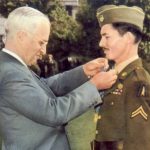 offered a deferment because he worked in the shipyards, Doss joined the Army on April 1, 1942 at Camp Lee, Virginia. Doss was sent to Fort Jackson in South Carolina for training with the reactivated 77th Infantry Division. His brother, Harold Doss, served aboard the USS Lindsey. Still, Doss refused to kill an enemy soldier or carry a weapon into combat because of his personal beliefs as a Seventh-day Adventist. He consequently became a medic assigned to the 2nd Platoon, Company B, 1st Battalion, 307th Infantry, 77th Infantry Division. While he did not carry a weapon, Doss was wounded four times in Okinawa, because he put himself in harms way to help his fellow soldiers. He was evacuated on May 21, 1945, aboard the USS Mercy. Doss suffered a left arm fracture from a sniper’s bullet and at one point had seventeen pieces of shrapnel embedded in his body.
offered a deferment because he worked in the shipyards, Doss joined the Army on April 1, 1942 at Camp Lee, Virginia. Doss was sent to Fort Jackson in South Carolina for training with the reactivated 77th Infantry Division. His brother, Harold Doss, served aboard the USS Lindsey. Still, Doss refused to kill an enemy soldier or carry a weapon into combat because of his personal beliefs as a Seventh-day Adventist. He consequently became a medic assigned to the 2nd Platoon, Company B, 1st Battalion, 307th Infantry, 77th Infantry Division. While he did not carry a weapon, Doss was wounded four times in Okinawa, because he put himself in harms way to help his fellow soldiers. He was evacuated on May 21, 1945, aboard the USS Mercy. Doss suffered a left arm fracture from a sniper’s bullet and at one point had seventeen pieces of shrapnel embedded in his body.
After the war, Doss went home to continue his career in carpentry. Unfortunately, extensive damage to his left 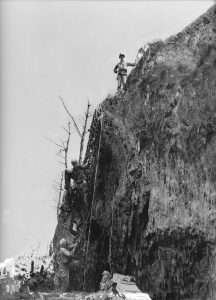 arm made carpentry a thing of his past. In 1946, Doss was diagnosed with tuberculosis, which he had contracted on Leyte. He underwent treatment for five and a half years, losing a lung and five ribs before being discharged from the hospital in August 1951 with 90% disability. He continued to receive treatment from the military. Then, an overdose of antibiotics rendered him completely deaf in 1976, after which he was given 100% disability. He received a cochlear implant in 1988, and was able to finally hear again. Despite the severity of his injuries, Doss managed to raise a family on a small farm in Rising Fawn, Georgia. He married Dorothy Pauline Schutte on August 17, 1942, and they had one child, Desmond “Tommy” Doss Jr, born in 1946. Dorothy died on November 17, 1991 in a car accident, in which Desmond was driving and lost control of the vehicle. It was a devastating loss. Doss remarried on July 1, 1993, to Frances May Duman. In March of 2006, he was hospitalized for difficulty breathing. Doss died on March 23, 2006, at his home in Piedmont, Alabama.
arm made carpentry a thing of his past. In 1946, Doss was diagnosed with tuberculosis, which he had contracted on Leyte. He underwent treatment for five and a half years, losing a lung and five ribs before being discharged from the hospital in August 1951 with 90% disability. He continued to receive treatment from the military. Then, an overdose of antibiotics rendered him completely deaf in 1976, after which he was given 100% disability. He received a cochlear implant in 1988, and was able to finally hear again. Despite the severity of his injuries, Doss managed to raise a family on a small farm in Rising Fawn, Georgia. He married Dorothy Pauline Schutte on August 17, 1942, and they had one child, Desmond “Tommy” Doss Jr, born in 1946. Dorothy died on November 17, 1991 in a car accident, in which Desmond was driving and lost control of the vehicle. It was a devastating loss. Doss remarried on July 1, 1993, to Frances May Duman. In March of 2006, he was hospitalized for difficulty breathing. Doss died on March 23, 2006, at his home in Piedmont, Alabama.

 My grandson, Josh Petersen is such a hard working young man. He has two jobs, totaling up to at least 12 hours a day. I don’t know how he does it, and still maintains his good disposition. He has always been an easy going guy though…not a lot of things get him upset. If you do cross that line, however…look out. Still, even if he yells at you, he never holds a grudge, so you are forgiven almost immediately…and as Grandma, I never get yelled at, haha!! To be honest he doesn’t yell at his parents either.
My grandson, Josh Petersen is such a hard working young man. He has two jobs, totaling up to at least 12 hours a day. I don’t know how he does it, and still maintains his good disposition. He has always been an easy going guy though…not a lot of things get him upset. If you do cross that line, however…look out. Still, even if he yells at you, he never holds a grudge, so you are forgiven almost immediately…and as Grandma, I never get yelled at, haha!! To be honest he doesn’t yell at his parents either.
A couple of years ago, Josh became an uncle to a sweet little girl, and will be uncle to a sweet little boy in November. It was one of the greatest moments in his life. He loves being uncle, even though he doesn’t get to see his niece too often, because he works so many hours. Josh has always loved kids, and animals. He has a number of fur babies, and recently lost his oldest dog, Molly, who was also his constant companion whenever he wasn’t working. Molly was a Dachshund, and Molly was his girl. He loved her very much. She was originally purchased by his parents for the family, but from the beginning, Molly was Josh’s dog. Animals are like that. They pick out the “human” they want to belong to, and there is little you can do to change their mind. Molly picked Josh, and the rest is history.
Josh was one of many essential workers during the Covid-19 pandemic. He works at Sanford’s Grub and Pub at night, and All Out Fire during the day. Both were considered essential jobs. It helped in the job situation, but while many of us were hanging out at home, watching television, he was still hard at it. Josh is such a trustworthy guy. He originally started working at Sanford’s when he was 15 years old. They didn’t normally hire 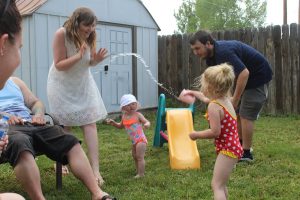 kids at that age, but they “took a chance” on him, and they have never been sorry. He has worked there longer than anyone else, including the managers, and he is the current kitchen manager. At just 22, that is a pretty good accomplishment.
kids at that age, but they “took a chance” on him, and they have never been sorry. He has worked there longer than anyone else, including the managers, and he is the current kitchen manager. At just 22, that is a pretty good accomplishment.
Josh may not have lots of free time, but he has good friends that he enjoys hanging out with…people he has known for years. Josh is a loyal friend too, and he is the kind of guy who will give you the shirt off his back, if you needed it. It doesn’t matter what the hour, if he can help, he will help. That’s just the way Josh is. Today is Josh’s 22nd birthday. Happy birthday Josh!! Have a great day!! We love you!!
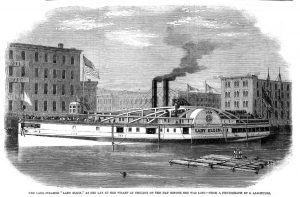 Just before midnight on September 7, 1860, a palatial sidewheel steamboat named the Lady Elgin left Chicago bound for Milwaukee. She was carrying about 400 passengers. She was returning to Milwaukee from a day-long outing to Chicago. Also on the water that night was the Augusta, a schooner filled with lumber. The captain of the Lady Elgin took notice of the Augusta around 2:30am. The night was stormy, and visibility was poor. Storm clouds raged and the waves were intense.
Just before midnight on September 7, 1860, a palatial sidewheel steamboat named the Lady Elgin left Chicago bound for Milwaukee. She was carrying about 400 passengers. She was returning to Milwaukee from a day-long outing to Chicago. Also on the water that night was the Augusta, a schooner filled with lumber. The captain of the Lady Elgin took notice of the Augusta around 2:30am. The night was stormy, and visibility was poor. Storm clouds raged and the waves were intense.
Suddenly, the lumber on the Augusta shifted, causing the two ships to collide. Instantly, the party atmosphere that had been on the Lady Elgin, turned to chaos and confusion. The Augusta received only minor damage in the collision, and kept right on sailing to Chicago. It wasn’t an unusual occurrence in those days. It’s possible that the Augusta assumed that if it wasn’t badly hurt, that larger ship probably wasn’t either. I can’t say for sure, but I know that this collision, in which the Augusta did not stop is not the first I have heard of such an incident in Maritime history. A large hole in the side of the Lady Elgin doomed the ship, which sank within thirty minutes. Only three lifeboats were able to be loaded and set into the water. The ships large upper hurricane deck fell straight into the water and served as a raft for some forty people.
The ship had crashed two to three miles off the shore of Highland Park, but the waves were so strong that survivors, bodies, and debris were all swept down to the northern shore of Winnetka. In those days, the lakeshore in this area consisted of a narrow strip of beach rising up to clay cliffs almost 50 feet high. An angry line of breakers churned up from the storm were crashing ashore. Around 6:30am the first of the three lifeboats made it to shore in the vicinity of the Jared Gage house…which still stands at 1175 Whitebridge Hill Road. A desperate call for assistance went out to the town from the Gage house. The people of Winnetka rode 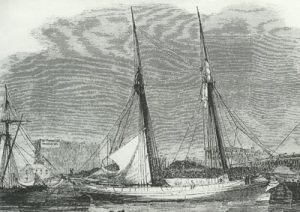 horses down to Northwestern University and the Garrett Biblical Institute to find any young men to help pull out survivors. The regional newspapers were quickly informed by telegraph. The newly completed Chicago and Milwaukee train line brought people to Winnetka to help as word of the accident spread. The effort to save the people on the Lady Elgin would have been a phenomenal feat today, but it was carried out in 1860, making it even more amazing.
horses down to Northwestern University and the Garrett Biblical Institute to find any young men to help pull out survivors. The regional newspapers were quickly informed by telegraph. The newly completed Chicago and Milwaukee train line brought people to Winnetka to help as word of the accident spread. The effort to save the people on the Lady Elgin would have been a phenomenal feat today, but it was carried out in 1860, making it even more amazing.
The crowds on the bluffs and beaches watched as pieces of wreckage washed up near the site of the present Winnetka water tower. By 10:00am, the bluffs were littered with people who had been strong enough to withstand the fierce storm of the previous night. Lastly came the hurricane deck with Captain Wilson and eight survivors whom the storm had thus far spared. Then, before their eyes, this storm-battered deck was dashed to pieces on an offshore sandbar and all on board were lost.
The storm left a tremendous undertow, creating the tragic situation…the exhausted victims had drifted close enough to the Winnetka shore to see it, only to be held back by the breakers. As the horrified onlookers watch, they died in full view of the people on shore, who could do nothing but watch. Men were lowered from the bluff with rope tied around their waists in attempts to pull people in to safety. One Evanston seminary student, Edward Spencer, is credited with saving 18 lives. Spencer is said to have repeatedly rushed into the sea, being battered by debris in order to save more people. I do not know, but I suspect that he is some relation to me on my Spencer side, and I feel honored that he was such a heroic figure. Spencer is said to have wondered many times in the aftermath, “Did I do my best?” It is the mark of a hero, never to feel like they did enough. Another man, Joseph Conrad, was said to have pulled 28 to safety. Other unknown rescuers pulled in survivors up and 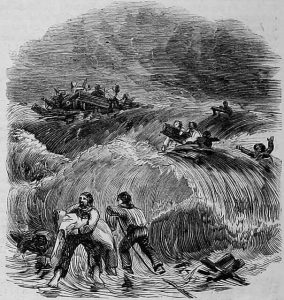 down the Winnetka and North Shore coastline.
down the Winnetka and North Shore coastline.
The Gage house, the Artemas Carter house at 515 Sheridan Road, and other Winnetka residences served as temporary hospitals. The newly-built Winnetka train depot served as a morgue. Winnetka residents brought food and clothing for the survivors. It is estimated that 302 people lost their lives that day, the exact number is unknown, as the ships manifest went down with the ship. The 1860 census shows only 130 residents in the town of Winnetka. The tragedy captured the nation’s attention, but was quickly overshadowed by the 1860 elections and the Civil War. Such is the way of things. An tragic event is only well remembered, until another comes to take its place.
 When a volcano hasn’t erupted for 400 years, people naturally assume that the volcano is dead, but volcanos don’t really die, they become dormant. In the case of Mount Sinabung, located on the Indonesian island of Sumatra. On August 29, 2010, Mount Sinabung experienced a minor eruption. The mountain had been rumbling for several days. Ash spewed into the atmosphere up to 0.93 miles high and lava was seen overflowing the crater. The four centuries of quiet were over. The most recent eruption prior to 2010 was in 1600. On August 31, 6,000 of the 30,000 villagers who had been evacuated returned to their homes. As volcanoes go, a category “A” must be monitored frequently, because it is very active. Mount Sinabung was assigned to a category “B,” meaning that no one would really know that more eruptions were on the horizon, unless more rumbling was heard in the days ahead
When a volcano hasn’t erupted for 400 years, people naturally assume that the volcano is dead, but volcanos don’t really die, they become dormant. In the case of Mount Sinabung, located on the Indonesian island of Sumatra. On August 29, 2010, Mount Sinabung experienced a minor eruption. The mountain had been rumbling for several days. Ash spewed into the atmosphere up to 0.93 miles high and lava was seen overflowing the crater. The four centuries of quiet were over. The most recent eruption prior to 2010 was in 1600. On August 31, 6,000 of the 30,000 villagers who had been evacuated returned to their homes. As volcanoes go, a category “A” must be monitored frequently, because it is very active. Mount Sinabung was assigned to a category “B,” meaning that no one would really know that more eruptions were on the horizon, unless more rumbling was heard in the days ahead 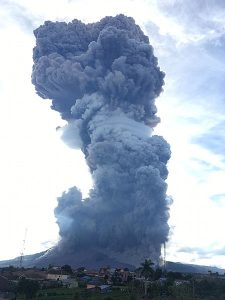 of the eruption. Following the eruption, the Indonesian Red Cross Society and the Health Ministry of Indonesia sent doctors and medicines to the area. The National Disaster Management Agency also provided face masks and food to assist the evacuees.
of the eruption. Following the eruption, the Indonesian Red Cross Society and the Health Ministry of Indonesia sent doctors and medicines to the area. The National Disaster Management Agency also provided face masks and food to assist the evacuees.
On Friday, September 3, 2010, two more eruptions occurred. The first one happened at 4:45am, forcing more villagers to leave their houses…some of whom had only returned the day before. This Was the biggest eruption to that date…maybe another reason to start to feel apprehensive. In this eruption, ash spewed up into the atmosphere about 1.9 miles high. In the hours before the eruption, a warning had been issued through the volcanology agency, and most villagers were prepared to leave quickly. A second eruption occurred the same evening, around 6pm. The eruption came with earthquakes which were felt up to 15.5 miles away from the volcano.
Then, on Tuesday September 7, Mount Sinabung erupted yet again…its biggest eruption since it had become active on August 29, 2010. Finally, Mount Sinabung had reached the point of a category “A” listing. Experts warned of more eruptions to come and began monitoring it closely. Indonesia’s chief vulcanologist, Surono, said 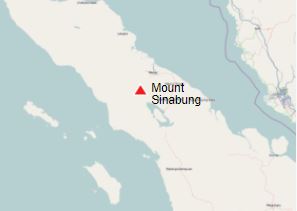 “It was the biggest eruption yet and the sound was heard from 8 kilometers away. The smoke was 5,000 meters in the air.” Heavy rain mixed with the ash to form muddy coatings, a centimeter thick, on buildings and trees. Electricity in one village was cut off, but there were no casualties in that instance. At least 14 people were killed in the early days of the eruptions. Following the reawakening of Mount Sinabung, it has erupted numerous times over the years since, with eruptions every year. It is a highly volatile volcano. The last eruption of Mount Sinabung was on August 10, 2020, producing an eruption column of volcanic materials as high as 16,400 feet into the sky. It doesn’t look like Mount Sinabung will become dormant again anytime soon.
“It was the biggest eruption yet and the sound was heard from 8 kilometers away. The smoke was 5,000 meters in the air.” Heavy rain mixed with the ash to form muddy coatings, a centimeter thick, on buildings and trees. Electricity in one village was cut off, but there were no casualties in that instance. At least 14 people were killed in the early days of the eruptions. Following the reawakening of Mount Sinabung, it has erupted numerous times over the years since, with eruptions every year. It is a highly volatile volcano. The last eruption of Mount Sinabung was on August 10, 2020, producing an eruption column of volcanic materials as high as 16,400 feet into the sky. It doesn’t look like Mount Sinabung will become dormant again anytime soon.
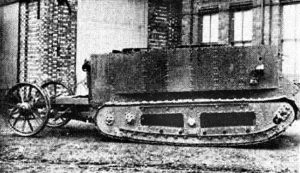 When I think of a tank, my thoughts go to an almost indestructible war machine, and I’m sure many people would agree with me. The tank was first introduced on September 6, 1915 in response to the trench warfare era of World War I. A British army colonel named Ernest Swinton and secretary of the Committee for Imperial Defense, William Hankey, championed the idea of an armored vehicle with “conveyor-belt-like tracks” over its wheels that could break through enemy lines and traverse difficult territory. It was a great idea, but the prototype tank nicknamed Little Willie manufactured in England was far from an overnight success. The tank was heavy, weighing in at 14 tons, but the big problem was that it got stuck in trenches and crawled over rough terrain at only two miles per hour. A tank isn’t much good if it has to be rescued, instead of rescuing the soldiers. It was also slow, and it became overheated and couldn’t cross the trenches. A second prototype, known as “Big Willie,” was produced. By 1916, this armored vehicle was deemed ready for battle and made its debut at the First Battle of the Somme near Courcelette, France, on September 15 of that year. Known as the Mark I, this first batch of tanks was hot, noisy and unwieldy and suffered mechanical malfunctions on the battlefield. Still, people began to realize the tank’s potential. Further design improvements were made and at the Battle of Cambrai in November 1917, 400 Mark IV’s proved much more successful than the Mark I, capturing 8,000 enemy troops and 100 guns.
When I think of a tank, my thoughts go to an almost indestructible war machine, and I’m sure many people would agree with me. The tank was first introduced on September 6, 1915 in response to the trench warfare era of World War I. A British army colonel named Ernest Swinton and secretary of the Committee for Imperial Defense, William Hankey, championed the idea of an armored vehicle with “conveyor-belt-like tracks” over its wheels that could break through enemy lines and traverse difficult territory. It was a great idea, but the prototype tank nicknamed Little Willie manufactured in England was far from an overnight success. The tank was heavy, weighing in at 14 tons, but the big problem was that it got stuck in trenches and crawled over rough terrain at only two miles per hour. A tank isn’t much good if it has to be rescued, instead of rescuing the soldiers. It was also slow, and it became overheated and couldn’t cross the trenches. A second prototype, known as “Big Willie,” was produced. By 1916, this armored vehicle was deemed ready for battle and made its debut at the First Battle of the Somme near Courcelette, France, on September 15 of that year. Known as the Mark I, this first batch of tanks was hot, noisy and unwieldy and suffered mechanical malfunctions on the battlefield. Still, people began to realize the tank’s potential. Further design improvements were made and at the Battle of Cambrai in November 1917, 400 Mark IV’s proved much more successful than the Mark I, capturing 8,000 enemy troops and 100 guns.
As with any new invention, the tank had a few “bugs” to be worked out. Still, I doubt if that did much to assuage the fears of the men in the tanks when they got stuck in the trenches. Tanks are supposed to be able to withstand gun shots and shrapnel, but would the tank be able to do so. After all, tanks weren’t supposed to get stuck either, so just how trustworthy was the armor plating. A tank that gets stuck is really just a “sitting duck.” Nevertheless, improvements were made to the original prototype and eventually tanks completely transformed military battlefields.
Trench warfare of World War I truly was brutal, almost more for the men in the trenches than anyone else. 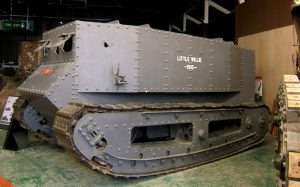 Finally, the men appealed to British navy minister Winston Churchill, who believed in the concept of a “land boat” and organized a Landships Committee to begin developing a prototype. To keep the project secret from enemies, production workers were reportedly told the vehicles they were building would be used to carry water on the battlefield…alternate theories suggest the shells of the new vehicles resembled water tanks. Either way, the new vehicles were shipped in crates labeled “tank” and the name stuck. Tanks rapidly became an important military weapon. During World War II, they played a prominent role across numerous battlefields. The tanks potential was finally an accepted fact.
Finally, the men appealed to British navy minister Winston Churchill, who believed in the concept of a “land boat” and organized a Landships Committee to begin developing a prototype. To keep the project secret from enemies, production workers were reportedly told the vehicles they were building would be used to carry water on the battlefield…alternate theories suggest the shells of the new vehicles resembled water tanks. Either way, the new vehicles were shipped in crates labeled “tank” and the name stuck. Tanks rapidly became an important military weapon. During World War II, they played a prominent role across numerous battlefields. The tanks potential was finally an accepted fact.

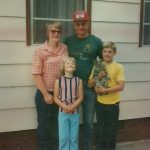 My husband, Bob Schulenberg’s aunt, Pearl Hein has always felt like a kindred spirit to me. Our lives have taken some of the same turns and in many ways that makes us feel connected. Pearl spend a number of years taking care of her aging parents, and when her husband, Bob’s Uncle Ed had a stroke, Pearl stepped in again to nurse him back to health. As we both know, you can only prolong life for your loved one. Everyone dies at some point, and no matter how young or how old they are, we just aren’t ready for them to go when they do. Each of us knows that we would have continued to fight for their lives with all we had. We weren’t ready to let them go. We couldn’t understand why. Did we do something wrong? Did we miss something? We will never know, of course, but we will always have regrets…mainly the regret that they aren’t here with us anymore. Of course, we know that Heaven is far greater for all of them, but we miss them terribly, and it is so hard to move forward in our daily lives.
My husband, Bob Schulenberg’s aunt, Pearl Hein has always felt like a kindred spirit to me. Our lives have taken some of the same turns and in many ways that makes us feel connected. Pearl spend a number of years taking care of her aging parents, and when her husband, Bob’s Uncle Ed had a stroke, Pearl stepped in again to nurse him back to health. As we both know, you can only prolong life for your loved one. Everyone dies at some point, and no matter how young or how old they are, we just aren’t ready for them to go when they do. Each of us knows that we would have continued to fight for their lives with all we had. We weren’t ready to let them go. We couldn’t understand why. Did we do something wrong? Did we miss something? We will never know, of course, but we will always have regrets…mainly the regret that they aren’t here with us anymore. Of course, we know that Heaven is far greater for all of them, but we miss them terribly, and it is so hard to move forward in our daily lives.
Pearl’s dad, Merle Krueger passed away in 2002 at 97; her mom, Minnie (McCain) Krueger passed away in 2004 at 89; Uncle Ed passed way on October 16, 2019 at 76; and sadly Pearl’s son Larry passed away passed away just 3 months after his dad on January 30, 2020. It has been a really hard year for Pearl, and moving forward is not easy, but it is my hope that today, her birthday can become a new start…or at least a new normal. Pearl has always been such a loving and giving person, and she deserves to be happy too. There are so many people who love her, and I pray she will find joy in her friendships. Pearl and I have another thing in common…we are both Christians. We both believe that there is life after death, and that our loved ones are waiting for us to join them in Heaven someday.
Pearl has spent much of her life in service to others, and I know that many people are thankful to have known her. Pearl met many of her friends in the years she spent working at the IGA grocery store in Forsyth, Montana. 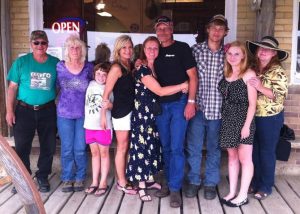
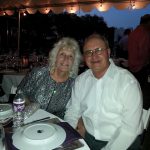 She was an indispensable employee, and when she retired to take care of Ed, they weren’t sure how they were going to function without her. I remember that whenever we would come into town, we always knew where to find Pearl, and when we went into the store, they only had to hear that we were looking for Pearl, and they were certain of who we meant. Everyone knows, and loves Pearl. She is just the kind of person you are drawn to. Today is Pearl’s birthday. Happy birthday Pearl!! Have a great day!! We love you!!
She was an indispensable employee, and when she retired to take care of Ed, they weren’t sure how they were going to function without her. I remember that whenever we would come into town, we always knew where to find Pearl, and when we went into the store, they only had to hear that we were looking for Pearl, and they were certain of who we meant. Everyone knows, and loves Pearl. She is just the kind of person you are drawn to. Today is Pearl’s birthday. Happy birthday Pearl!! Have a great day!! We love you!!

